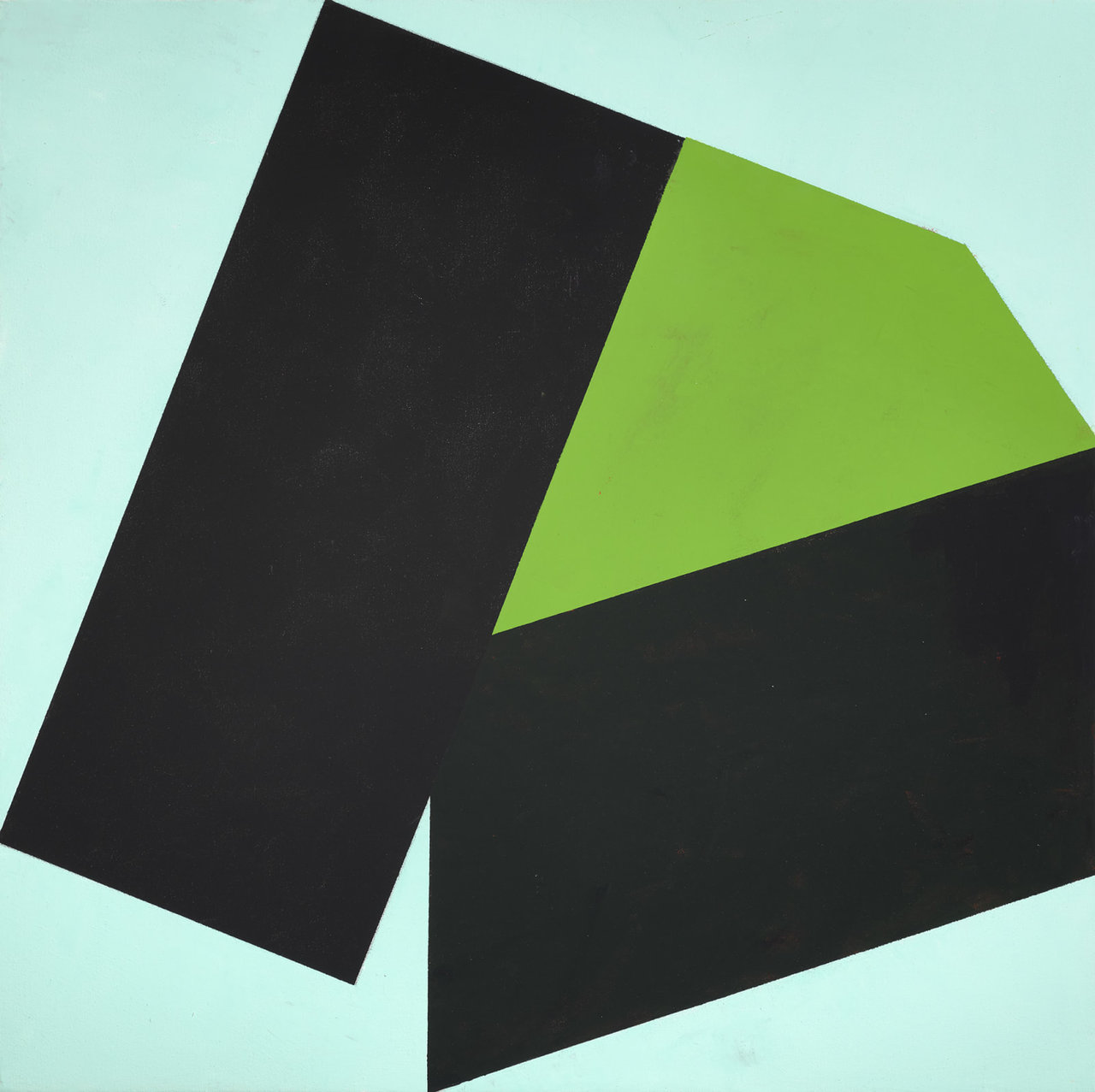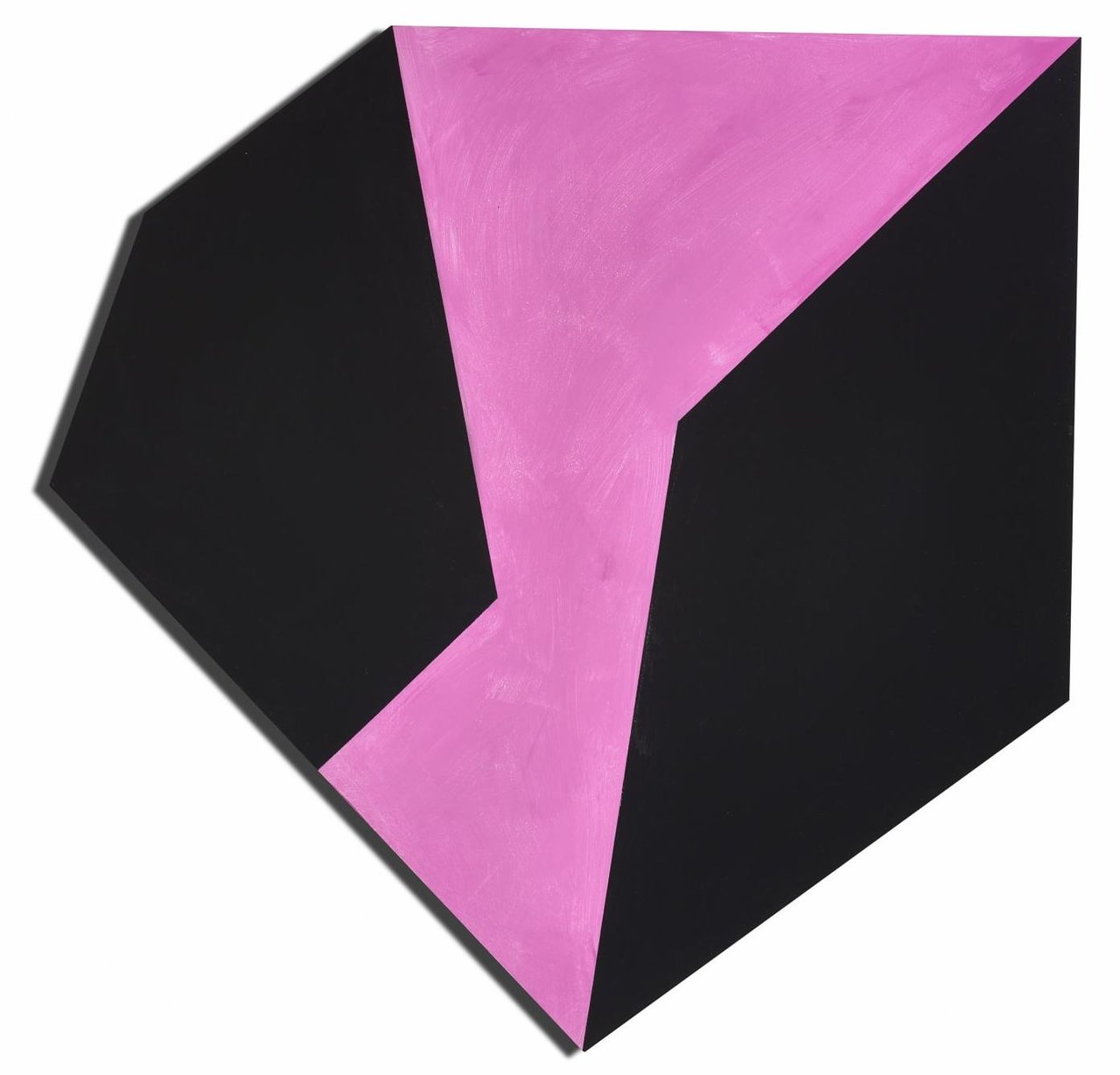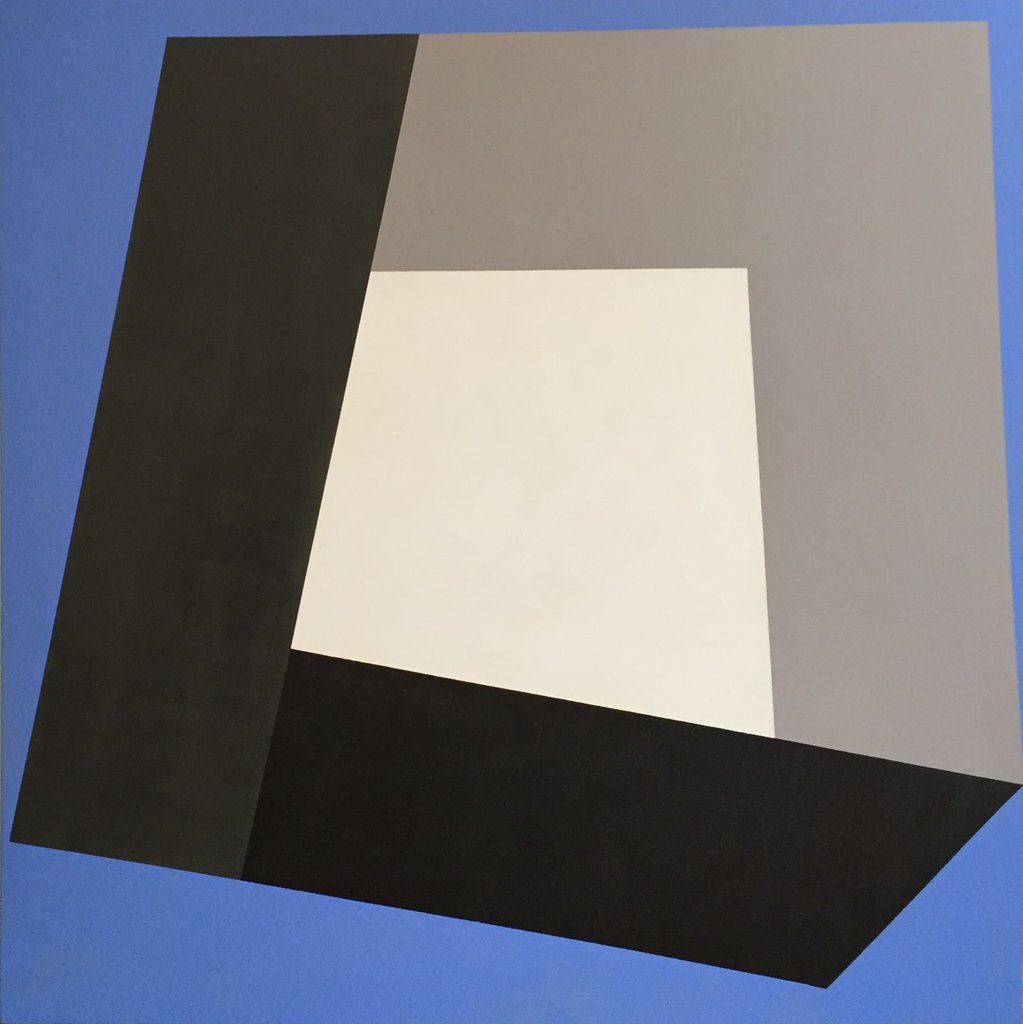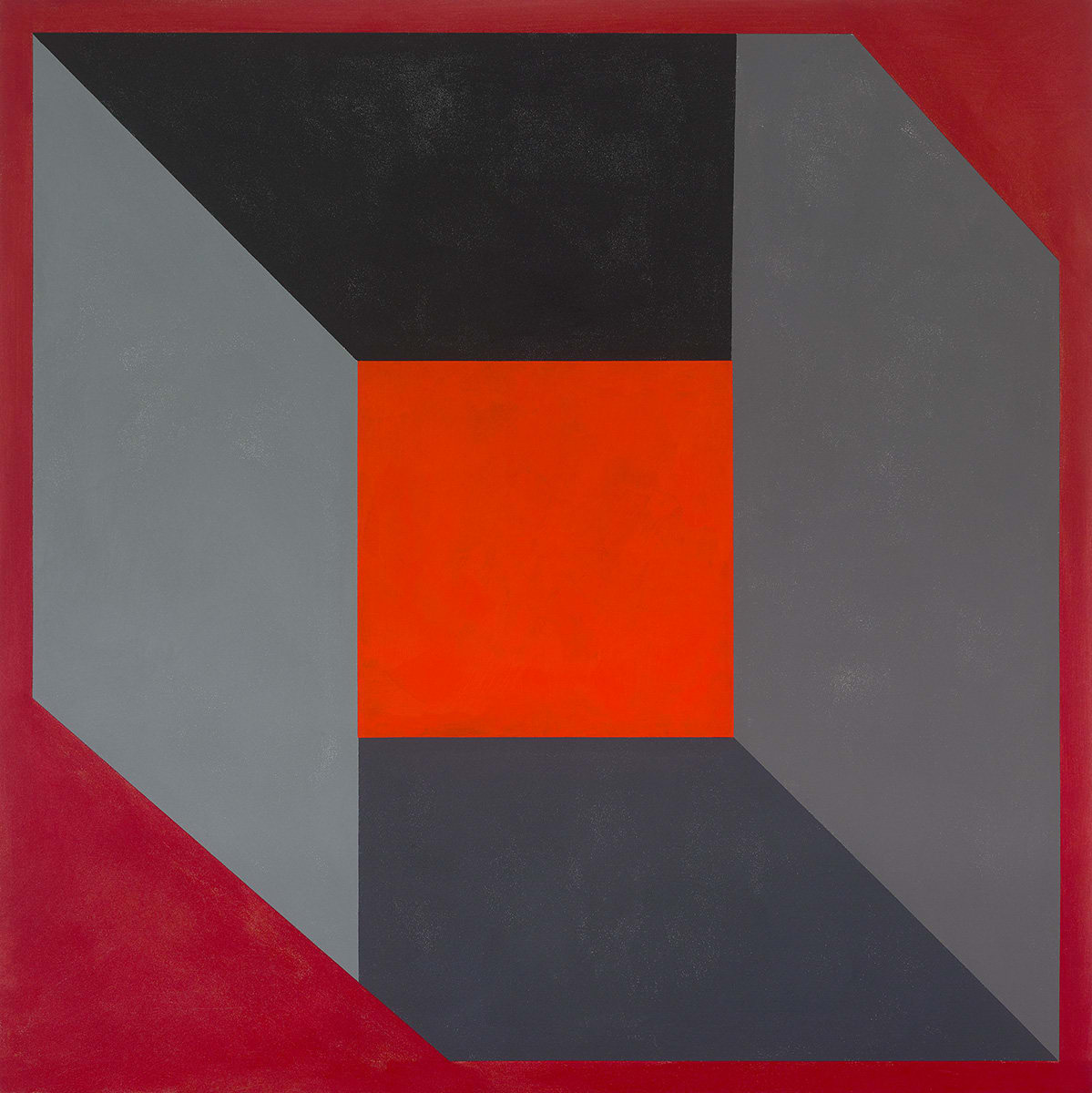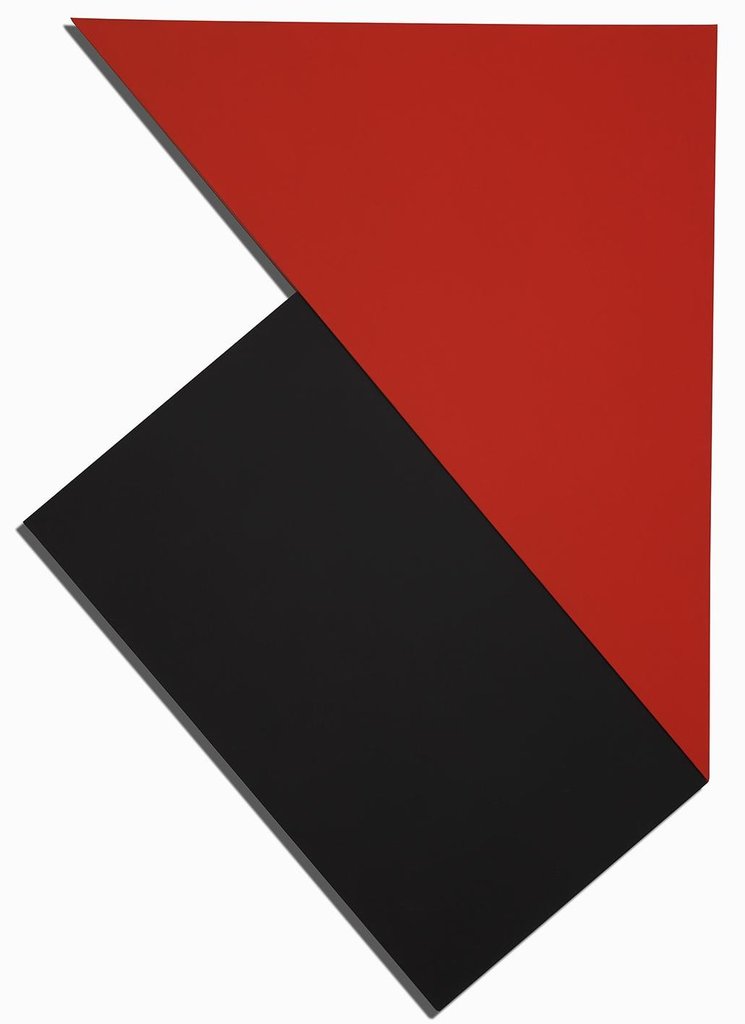A Ric Evans painting is an object in its own right. Culturally, we are long past having to justify a work of abstraction, even if the object doesn’t purport to depict things outside itself. The digital age may in fact, have imbued the genre with fresh relevance. Over the course of decades, painting has had to rise out of the ashes time and again. The work of Evans has roots in the painting-is-dead 70s, which may account for its sense of insistent sturdiness. Merely having survived, speaks to the work’s foundational strength.
An Evans painting maintains a conceptual clarity. I liked Roald Nasgaard’s reference to Ric’s comment in the catalogue notes for his 1975 Art Gallery of Ontario Four Painters group show, “he simply gave the facts.” It brings to mind my visit to Ric’s Duncan Street studio in 1997. The subject of discussion had been a post card that he had of Jan van Eyck’s Arnolfini Marriage portrait. “It’s my favourite painting,” Ric had said. It threw me at the time, but I am coming around to seeing what he might have been driving at. The Northern Renaissance formal precision of van Eyck’s treatment of bride and groom, surrounded by dog, shoes, fruit, window chandelier, convex mirror, and bed are sharp-edged puzzle pieces that snap into a coherent compositional whole – all painted in unambiguously vivid colour. Beyond the imagery, viewing it with an Evans abstract is not a stretch if we squint for traces of its structural scaffolding. Having the gist of something allows essential points to be laid out as “just the facts.”
Rick Evans, Unveiled Elements, 2019, oil on canvas, 30 x 30 in
Some elucidation is required on the current state of the relationship between paint and pixel. The 80s Neo Geo circuits and conduits of Peter Halley were literal. They were illustrations of post structuralist prisons inhabited by Michel Foucault and simulated by Jean Baudrillard. Our digital deluge has had much more to teach us. Since then we’ve learned to surf. Virtually all of our communications flow though a fine abstract mesh, the resolution of its pixels is ever higher and now inextricably woven into our analog lives. We’re no longer conscious of their geometry, but like tropical fish we swim in it. A reading of the Evans Cardinal Elements (Magenta) 2019 packs as much resolution as we are willing to download. It caught my eye when I entered the exhibition during its opening. The yin yang binary properties of this six-faceted gem sparkle with a restless energy. It’s a genuine Pink Panther. The paradox of a pink panther jewel is that its value is derived from a hidden flaw. Evans pinches the pink magenta of his work between two dark geometric fingers, suggesting a counter-clockwise motion visually, as if the painting is undergoing a careful examination.
Rick Evans, Cardinal Elements (Magenta), 2019, acrylic on board, 47 x 47 in
It could be said that Evans has created his own Periodic Table of colours over time. His pigments have, not so much been found as mined. Black might be the memory of the loam out of which the colours were extracted. It has become the standard against which Evans measures value and weight. By its inclusion in most of his paintings, black sets up a figure and ground dynamic. It’s one of many pairs of opposites that apply rhythmic syncopation to his work – a two-fisted left jab/right hook approach. Evans engages the themes Open, Fold, and Reveal, in a formalist play with their counterparts, alternating hide and peek with hide and seek. At a most basic level, Evans calls for a sharpening of our senses, to condition and discipline our sense of sight to a point of insight and knowledge.
Rick Evans, The Harmony of Appearance, 2018, acrylic on canvas, 60 x 50 in
The Cardinal Elements exhibition is an artist’s affirmation of his creative exploration. The work is its documentary proof. Unveiled Elements, 2019, Revealed Forms, 2018, and The Harmony of Appearance, 2018 are invitations by Evans to the viewer to travel on the road that led to his discoveries, to the extent that this is possible. At the heart of any creative labour is the potential for some kind of revelatory insight. Over the course of his career, Evans has synthesized his experience into “elements,” much like a chemist in the laboratory.
Rick Evans, Revealed Forms Red, 2018, acrylic on canvas, 68 x 68 in
The Evans Untitled (to K.M.), 1991 is primal. With its dominant red over a black rectangle, it signals our most powerful emotions. Red is our code alert. Kasimir Malevich’s 1915 Black Square and Red Square feature these colours. Much as Malevich did, Evans favours a dynamic geometry over a static grid. His Untitled (to K.M.) bears a coincidence of initials. Intended for Malevich in 1991, Evans has now included in the dedication Toronto gallery dealer Katharine Mulherin, who passed away recently. It is the largest and simplest composition in the exhibition, employing two criss-crossing diagonals. The black rectangle seems to slide from top left to bottom right. The red triangle becomes an arrowhead pointing up from bottom left to top right. It’s gravity at work. Black pulls downward, while red pushes up in defiance. Put in the simplest terms, the work describes the struggle that life presents to each of us from day to day.
Rick Evans, Untitled (To K.M.), 1991, oil on canvas, 90 x 62 in
Steve Rockwell
Images are courtesy of Nicholas Metivier Gallery
*Exhibition information: Ric Evans, Cardinal Elements, September 12 – October 5, 2019, Nicholas Metivier Gallery, 190 Richmond Street East, Toronto. Gallery hours: Tue – Fri, 10 am – 6 pm; Sat, 12 – 5 pm.

